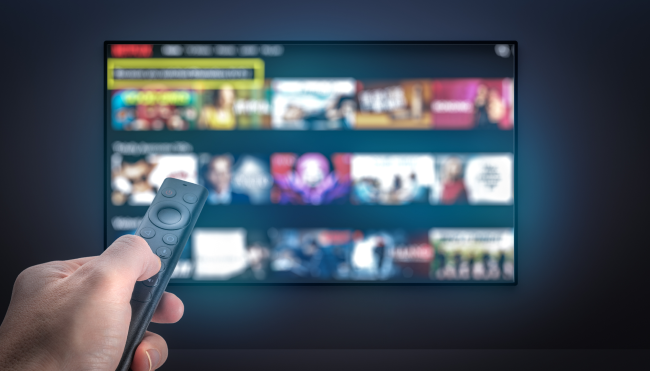- Why Amagi
-
Solutions
Contact UsBusinessWho We Serve
- Offerings
- AI
-
Resources
Contact UsINDUSTRY REPORTSAmagi FAST Report #15: The Power of Live Programming: A Catalyst for Streaming SuccessAugust 21, 2025Read More
-
Company
Contact UsNewsroomAmagi launches AI-powered Smart Scheduler to improve content programmingApril 3, 2025Read More
Blog
Your guide to video distribution: Channels, strategies, role of AI and more
By Vijay P Sankar, Director, Product Marketing, Amagi - July 1, 2025
A video producer knows that creating high-quality content is not enough of a differentiator. One of the most important things to do after creating, editing, and producing content is to distribute it to the right platforms and people.
Let’s dive deep into all the essentials of video distribution.
What is video distribution?
The video distribution process involves taking the final edited video and creating the right distribution strategy while keeping the target audience in mind. The distribution goal is to get maximum visibility, engagement, and monetization.
Here are three primary types of video distribution channels – earned, paid, and O&O (Owned and Operated). Earned channels are organic in nature. You can share your videos without paying to promote them. Examples include social media posts, reshares, and user-generated content.
Paid video distribution platforms let you pay to have your video content reach the right target audience with amplified reach. Examples include social media paid ads, influencer collaborations, and programmatic video ads.
O&O video distribution channels are ones you can control directly, such as mobile apps, websites, blogs, or YouTube channels.
Top video content distribution strategies
The most critical part of video content distribution is strategy – the video not only needs to reach the right audience, but also needs to reach them at the right time, which helps increase visibility and overall engagement. Here are steps to help get your video content distribution strategy on the right track.
- Understand your audience: First, you need audience data that may include their likes, preferences, and which platforms and devices they use to consume video content.
- Optimize videos according to platforms: Instead of sharing the same video content across all platforms, it’s best to optimize it based on the content format and audience expectations of each platform, which helps maximize engagement and shareability. For example, taking a broadcast clip that hasn’t been reformatted for social media and posting it directly can hurt its discoverability and performance. Platforms favor content tailored to their specific formats, such as vertical video, shorter durations, or captioned clips.
- Get your SEO right: Using the right SEO-optimized content can help increase the viewability of your video content. As it reaches more people, the engagement rate increases automatically. Using relevant hashtags, titles, and descriptions helps grab more eyeballs.
- Cross-promotion and collaboration: Share your video across multiple platforms and formats. For example, you can make a teaser of a full YouTube video with short clips on Instagram Reels or TikTok. To boost your reach, partner with influencers or brands that connect with your target audience.
READ: Unlocking unified distribution strategies for content owners
How to measure the success of distributed videos

Understanding your video's performance is key to refining your strategy and maximizing impact. Here are some metrics to track video distribution success:
Number of views: This is the most basic indicator of reach. It tells you how often your video was played, though it doesn't account for engagement or watch time.
Watch time and average view duration: People are watching your videos, but for how long? High view counts with low watch time could mean your content isn't holding their attention or there are technical issues with your playout.
Basic engagement metrics: Likes, comments, shares, and saves, indicate that your video made an impact. High engagement reflects viewer interest and helps boost visibility through platform algorithms.
Click-Through Rate (CTR): If your video includes a call to action (CTA) like 'Learn More' or 'Subscribe,' the CTR tells you how many viewers took that next step.
Conversion rate: What's the goal of your video? Do you want viewers to sign up, purchase, or download? Conversion rates help tie your video efforts directly to business outcomes and ROI.
Traffic sources: Finding out which source brings the maximum traffic to your video is essential in developing your content distribution strategy. These traffic sources include regular internet searches, social media, and referral sites.
Audience retention: Analyzing retention graphs can help you understand which parts of the video are engaging or causing drop-offs so you can improve future content.
Some of the best platforms for video distribution include social media platforms such as Facebook, Instagram, and YouTube. You could also look at distributing video content through Over The Top (OTT), Free Ad-supported Streaming TV (FAST) platforms, and your O&O channels. For example, a news channel can create short-form, vertical videos for Instagram/YouTube shorts to drive younger audience engagement while distributing long-form documentaries on a FAST channel like Pluto TV. This multi-platform approach ensures content reaches viewers wherever they are and in the preferred format.
READ: How to distribute a FAST channel
The future of video distribution: Automation and AI
Automation and Artificial Intelligence (AI) are reshaping video distribution across live and on-demand formats. These technologies power faster, more intelligent, and more scalable content workflows. Thanks to AI-driven metadata enrichment and automated formatting for dynamic clip generation and cross-platform publishing, modern distribution is becoming increasingly efficient and personalized.
AI-powered solutions enable broadcasters and content owners to streamline operations through intelligent automation. They help improve discoverability with smart tagging, generating SEO-friendly metadata, and creating personalized recommendations. AI also supports real-time adaptation of content delivery based on viewer behavior and performance analytics.
These technologies will continue streamlining workflows and enabling scalable, data-driven video strategies for content creators and marketers alike.
READ: The role of AI in media technology innovation
Video distribution mistakes to avoid
Remember that one size doesn't fit all. The biggest mistake you can make is posting the same video across platforms without tailoring it to each channel's format, audience, or best practices. Neglecting to optimize metadata like titles, tags, and thumbnails can also hurt visibility and discoverability. Understand the importance of a clear CTA to avoid missing out on potential engagement or conversions. Some other mistakes, such as inconsistent posting schedules, ignoring analytics, and failing to repurpose content, are other pitfalls that limit a video's reach and impact.
Want to learn more?
Related Blogs
Get started
Increase revenue and reach with our Broadcast & Streaming solutions.
Cloud modernization. Streaming unification. Monetization. Marketplace.
 German
German French
French Spanish
Spanish Korean
Korean Japanese
Japanese Portuguese
Portuguese


